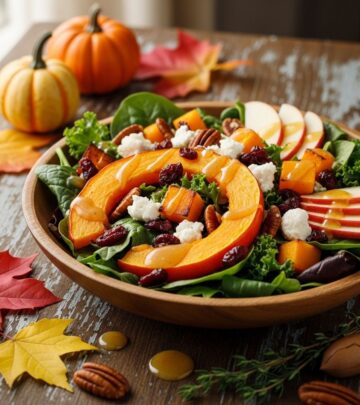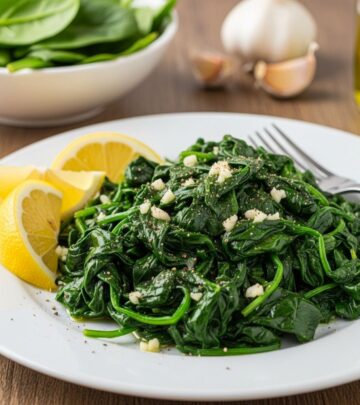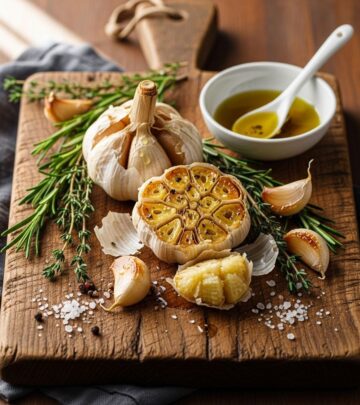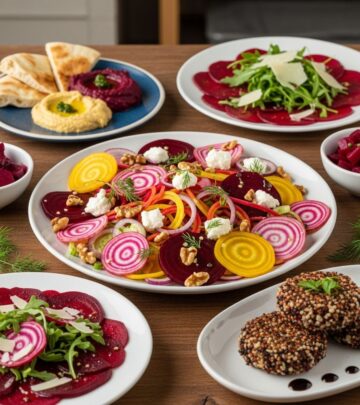Mastering Fennel: Essential Knife Skills for Slicing, Dicing, and Beyond
Learn expert cutting techniques to elevate fennel from humble bulb to gourmet dish.
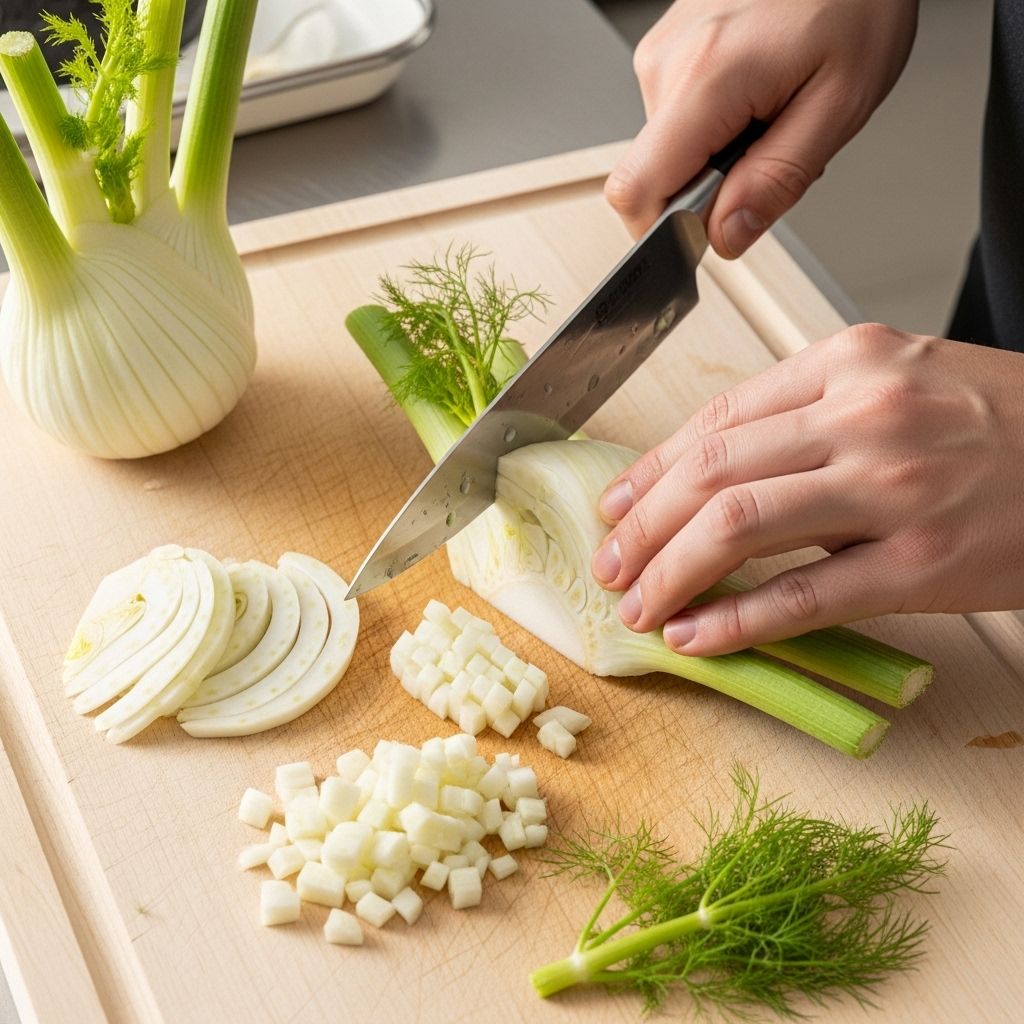
Fennel is a versatile vegetable with both a uniquely aromatic flavor and remarkable variety in the kitchen. Whether served raw in salads or cooked into savory dishes, mastering its preparation is key to unlocking its culinary potential. This guide covers every essential step in cutting and preparing fennel—from trimming and slicing to dicing, wedging, and even garnishing with fronds.
Table of Contents
- Introduction: The Case for Cutting Fennel Properly
- Understanding the Anatomy of Fennel
- Trimming the Fennel Bulb
- Removing the Core
- How to Slice Fennel
- Tips for Thinly Shaved Fennel
- How to Dice Fennel
- Cutting Fennel Into Wedges
- Saving Fronds and Stalks
- Creative Uses for Cut Fennel
- Frequently Asked Questions (FAQs)
Introduction: The Case for Cutting Fennel Properly
Fennel’s sweet anise flavor transforms any dish, but its unique structure—a bulb with stalks and fronds—can be intimidating. The good news is that, with a few knife skills, you can efficiently break down fennel for any recipe. You’ll learn practical techniques for prep, slicing, dicing, and more, building confidence to serve fennel raw, roasted, sautéed, or even as a flavorful garnish. Each cut unlocks different textures and uses in the kitchen.
Understanding the Anatomy of Fennel
Before picking up your knife, take a moment to understand fennel’s structure:
- Bulb: The crisp, white base—used most commonly for slicing, dicing, or wedging.
- Stalks: Green, celery-like stems that rise from the bulb—sometimes tough when raw but flavorful for stocks.
- Fronds: Delicate, feathery greens—excellent for garnish or herbaceous flavoring.
- Core: The internal base providing rigidity; often removed before slicing or dicing.
| Fennel Part | Texture | Common Uses |
|---|---|---|
| Bulb | Crisp, juicy | Raw salads, roasting, sautéing, braising |
| Stalks | Fibrous, tough | Soups, broths, stews |
| Fronds | Light, herbaceous | Garnish, pesto, infused oils |
| Core | Dense, firm | Remove for most raw preparations |
Trimming the Fennel Bulb
Start by properly trimming your fennel. This step ensures you’re left with the most usable portion for cutting and makes the process cleaner and safer.
- Wash thoroughly: Remove dirt from bulb crevices.
- Trim stalks: Using a chef’s knife, cut off dark green stalks at the point where they join the bulb. Set aside for stock or flavoring.
- Remove fronds: Cut or pinch off feathery green fronds. Reserve these for garnish or salads.
- Peel if needed: If the outer layer is dry or discolored, peel it away to reveal the crisp white beneath.
Your bulb is now ready for cutting. The above method helps maximize yield and prepares you for cleaner, consistent slices or dice.
Removing the Core
Like onions, fennel bulbs have a central core that holds their layers together. Whether or not you remove the core depends on your intended cut:
- For thin slicing and raw uses, or when even cooking is needed, remove the core for more uniform results.
- For wedging, the core may provide needed structure to hold the segments intact. Remove after cooking, if preferred.
To remove the core:
- Stand the trimmed bulb upright on its flat base.
- Cut vertically in half from top to base, revealing the triangular core.
- Use the tip of the knife to cut a wedge-shaped section around the base (as you would with cabbage) and lift out the core.
How to Slice Fennel
Slicing is the most common way to prepare fennel, suitable for salads, sautés, and more. Here’s how to achieve consistent slices:
- Lay each bulb half cut side down for stability.
- Hold firmly and slice crosswise, parallel to the stalk end, for curved, crescent-like pieces. Choose your thickness based on the dish: thin for salad, thicker for roasting.
- For even thinner slices, use a mandoline slicer. This is ideal for dishes where paper-thin fennel is needed for delicate texture.
Tip: Paper-thin slices are sweeter and crunchier in salads, while thicker ones develop more caramelization when cooked.
Tips for Thinly Shaved Fennel
For raw salads—such as the classic fennel and orange salad—shaved fennel offers a particularly refreshing crispness. Achieving wafer-thin slices brings out the vegetable’s sweetness and ensures tenderness.
- Chef’s knife: Slice as thinly as possible, taking your time for even cuts.
- Mandoline: Set to your desired thickness and carefully pass the fennel bulb halves over the blade. This delivers the thinnest, most uniform slices.
Mandolines are highly recommended for home cooks who want professional results, especially with large quantities or repetitive slicing.
How to Dice Fennel
Diced fennel works well in soups, sautés, and stews where small, even cubes are preferred for consistent cooking. The dicing process is simple when following these steps:
- After trimming and halving the bulb, lay halves flat on the cutting board for stability.
- Slice each half into quarters.
- Take one quarter at a time and make lengthwise cuts to your desired width (for the length of dice).
- Rotate and cut crosswise to produce small or large dice, depending on recipe requirements.
Pick through the dice to remove any leftover bits of core or fronds that may have fallen in.
Cutting Fennel Into Wedges
Fennel wedges bring a robust presence to roasted or grilled dishes. They hold their shape and caramelize beautifully. When cutting for wedges:
- Halve the fennel bulb lengthwise as in previous steps.
- Leave the core intact (it holds the layers together through cooking).
- Cut each half into 2 to 4 wedges, depending on the bulb’s size and the specified wedge thickness.
- If smaller shapes are needed, cut each wedge crosswise for chunkier dices or in half lengthwise for slimmer wedges.
This method is ideal for oven-roasting, grilling, or braising, where a substantial piece delivers both flavor and texture.
Saving Fronds and Stalks
Don’t let fennel’s stalks and fronds go to waste:
- Fronds can be used as a fresh garnish, blended into green sauces, or mixed with herbs in salads and pastas.
- Stalks offer robust flavoring for stocks and broths. Chop and simmer alongside other aromatics, then strain before use.
This whole-vegetable approach minimizes waste and expands the uses of a single fennel bulb.
Creative Uses for Cut Fennel
Once cut, fennel’s applications are plentiful. Some of the most popular uses include:
- Raw salads: Combine thinly shaved fennel with citrus, olive oil, and fresh herbs for a refreshing crunch.
- Roasted sides: Toss wedges or slices with oil and roast until caramelized and tender.
- Soups and stews: Use diced fennel to flavor stocks, or simmer until soft in hearty soups.
- Pasta and grain salads: Add sliced fennel for a subtly sweet, aromatic component.
- Garnishes: Sprinkle chopped fronds over finished dishes for visual appeal and a pop of flavor.
Bonus tip: Fennel’s subtle anise notes pair beautifully with seafood, citrus, nuts, and cheese, offering endless creative possibilities.
Frequently Asked Questions (FAQs)
Q: Do I have to remove the core from fennel every time?
A: No. Removing the core is best when you want quick, even cooking or exceptionally tender slices (for salads or stir-fries). For wedges, leave the core to keep pieces together during roasting; remove after cooking if desired.
Q: Can I eat fennel stalks and fronds?
A: Yes! While stalks are too tough to eat raw, they add flavor to stocks and broths. Fronds are edible and delicious in salads, on pasta, or as a garnish.
Q: How do I store cut fennel?
A: Store tightly wrapped slices or dice in the refrigerator up to 3 days. Keep fronds in a damp paper towel in a plastic bag for up to 2 days.
Q: Is fennel always eaten raw?
A: No. Fennel is delicious both raw (shaved in salads) and cooked (roasted, grilled, braised). Cooking mellows fennel’s licorice notes and brings out sweetness.
Q: What dishes benefit most from using diced fennel?
A: Diced fennel is ideal for soups, sautés, stir-fries, frittatas, and pasta sauces where subtle flavor and even texture are desired.
Conclusion
Mastering fennel knife skills opens up a world of flavor, texture, and visual appeal in your cooking. From crisp raw salads to deeply caramelized roasts, learning to properly trim, slice, dice, and utilize every part of the bulb ensures you get maximum value from this exciting ingredient. Practice these techniques and experiment with new fennel recipes—their bright, sweet, and herbal notes will soon become a staple in your kitchen.
Read full bio of Sneha Tete


